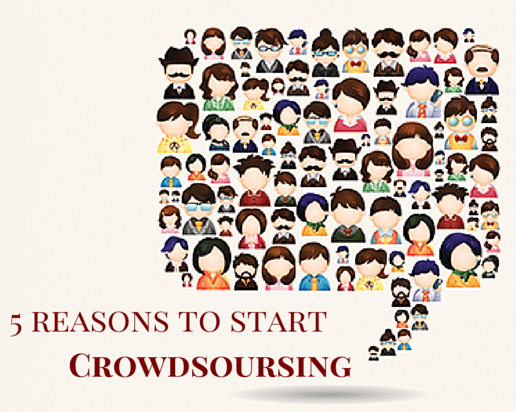5 Reasons to Start Crowdsourcing Blog Content

September 11, 2015
5 Reasons to Crowdsource Blog Content
Crowdsourcing is simply the process of enlisting the help of the general public to accomplish a task. Crowdsourcing campaigns have include asking for the public's contribution to tasks such as:
- Creating Wiki Entries
- Logo Design
- Generating Story Ideas
- Brand Development
- Identification and Classification of Items
- Creation of Blog and other Content
When companies solicit crowdsourcing efforts, they usually target social media followers, customers, website visitors, and members of demographics that are likely to be attracted to their brand. Crowdsourcing efforts are conducted in many ways. Here are a few examples:
- Polls, Quizzes, and Questionaires
- Soliciting Comments and Feedback
- Soliciting Ideas and Solutions
- Requesting Contribution of Pictures and Videos
- Soliciting Guest Contributions and Posts
In many cases, a company will offer some form of compensation to those who participate in crowdsourcing campaigns. This compensation could be in the form of a discount or credit, recognition, a free prize, or special access. Sometimes, crowdsourcing campaigns are run as contests.
When it comes to crowdsourcing content, one of the most commonly asked questions is, 'why?'. There are, in fact, many good reasons to crowdsource content. The remainder of this post will address 5 reasons why you should consider crowdsourcing your content.
Crowdsourcing Blog Content Brings a Fresh Perspective
The average company has an individual or small team that is responsible for content creation. This can result in stagnation. It can also result in a kind of tunnel vision, where the content creators churn out post after post of what they believe consumers should want to see, not necessarily what they actually want to see. When the public contributes directly or indirectly to blog content, marketers are given a new point of view to consider. This perspective is often in stark contrast to what was expected. When the public contributes new opinions and ideas, they aren't simply helping content writers with a single posting. In most cases, they are contributing ideas that can become the basis for multiple blog posts.
Crowdsourcing Creates Engagement
People enjoy giving their thoughts and opinions. They like sharing their ideas. When the public contributes content, they become more engaged in the business or individual who is receiving their contributions. This means that in addition to contributing their ideas or thoughts, they will seek involvement. This involvement and emotional investment is a great way to develop loyalty.
Crowdsource Content Results in Community Growth
When a person contributes content to a website or blog, they remain interested and engaged after they do so. They also, in most cases, want to share their contributions with others. For example, if an individual submits a video to be used in a blog, they are likely to share that information with their friends on social media. They are also likely to return to the website or blog to see when and how their contribution is utilized, and their friends are likely to do so as well. This increases the number and the frequency of visitors. More visitors of course results in more engagement, more comments, and more sharing. The use of incentives, of course, adds even more motivation.
Crowdsourcing Results in the Increased Production of Blog Content
People want content. Not only do they want content, they want new content on a regular basis that informs, entertains, enlightens, and engages. It can be extremely difficult for content writers, marketing professionals, and business owners to meet the general public's demand for content at the rate they want to receive that content. In most companies there are only a few people who write blog content. In most cases, those people also have additional duties. Using crowdsourced contributions to create or enhance blog posts takes the pressure off of those who are tasked with publishing content while also increasing the amount of blog content that is produced. It is a simple numbers game. The more contributors to blog content, the easier it is to push that content out quickly.
Crowdsourcing can Free Up Overly Burdened Resources
One of the most common complaints about generating blog content is the amount of time it takes, and the amount of time that cannot then be dedicated to other tasks. When a business owner or employee is spending time writing blog content, they are not spending time on the following:
- Product development
- Direct sales
- Other marketing tasks
- Quality assurance
- Accounting and other operational duties
In addition to the time savings, crowdsourcing content can result in the optimum use of talents. This means that the staff who is tasked with creating content, may not necessarily have the natural talent required to write blog posts that customers want to read. When the public contributes talent, these people can perform duties that align better with their natural abilities.



